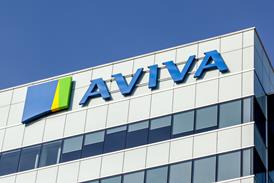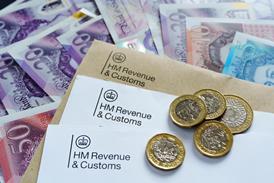The Pensions Management Institute's Tim Middleton explains why the dashboard is an exciting opportunity, but warns there are also dangers.
It is now very rare for individuals to remain with the same employer throughout their career: on average, a person will have 11 different employers during their working life.
Given the generally poor standing the pensions industry has in the eyes of the public, effective security is surely the greatest challenge the dashboard faces
The success of auto-enrolment means they will have an extensive array of pension savings.
A portal to the future
For younger people, private sector workplace pension savings will almost inevitably involve defined contribution arrangements. The dashboard will help them measure total levels against the lifetime allowance and to organise decumulation in a managed fashion.
Data aggregation websites are also very familiar to consumers: most people will by now have had some experience of the concept through using sites such as Expedia, Money Supermarket, Go Compare or Trivago.
The dashboard is an opportunity to provide consumers with a valuable service in a form that is already familiar to them.
Cautionary note
It is, however, important to raise a note of caution about the proposal. Central government has a less-than-impressive track record when it comes to delivering major IT projects on time and within budget.
Even if a working prototype is ready for spring 2017 as planned, it will be some years before the service is available to the general public.
It is inevitable that the aggregation of commercially sensitive information will cause some pension providers to treat the dashboard with, at best, suspicion and, at worst, outright hostility.
Allowing members to compare charging structures, fund ranges and decumulation services will inevitably lead to an upsurge in transfer activity.
While this is clearly advantageous for members, we should expect resistance from those parts of the industry that perceive the need to be competitive as a threat.
Are your pensions data secure?
However, the single greatest danger posed by the dashboard is security. In the recent past, we have seen high-profile examples of the damage that hackers can cause.
Inadequate security can expose huge numbers of people to cyber crime, but even if no detriment to customers occurs, the reputational damage caused by hacking is extremely serious: a successful attack on the pensions dashboard could result in the theft of both pension savings and personal information.
Reconfiguring DC: The pensions dashboard
The pensions dashboard could be the upgrade the industry needs to take it into the digital age but is at risk of being just another expensive neglected technology project.
Given the generally poor standing the pensions industry has in the eyes of the public, effective security is surely the greatest challenge the dashboard faces.
How to make the dashboard work
Royal London's Steve Webb gives his views on the pensions dashboard’s pitfalls and potential.
We are right to be excited by the possibilities that the dashboard offers. This is a great opportunity to encourage the public to become more engaged with pension saving and is likely to force the industry into being more competitive.
However, it also carries huge security risks. Our enthusiasm for effective information must be tempered with caution about the associated dangers.
Tim Middleton is technical consultant at the Pensions Management Institute














